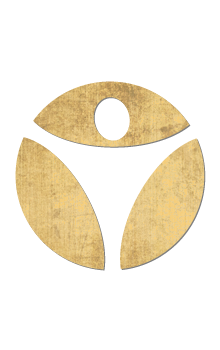8 Reasons Why You’ll Never Run Without Yoga Again: Yoga for Runners
- Updated on: January 26, 2022

As a runner, you know you need to stretch. Torn muscles, weak joints, and injuries are real risks to the avid runner. But stretching just sounds…well, boring!
So you find yourself pushing through discomfort on your run against your best judgement, attempting stretches improperly that cause more harm than good, or skipping out on your runs altogether despite how much you love to hit sneakers to pavement.
What if you could find a practice you actually enjoy that would help you stretch safely and maintain your running routine?
Enter: yoga. Once you integrate yoga into your running routine, you’ll never run without it again. That’s because yoga offers so many benefits for your body and your mind. You’ll support your run by tending to the muscles, joints, and ligaments your runs depend on. Plus, you’ll get so much more than you could have imagined in the process.
There’s a reason runners naturally gravitate to yoga. It provides similar elements to running such as discipline, physical challenge, mental resilience, and breathwork. That’s why yoga and running pair so well. Let’s explore 8 ways yoga compliments running so you can start reaping the benefits today!
The Benefits of Yoga for Runners
The ultimate benefit of yoga is that it helps runners avoid injury through a holistic approach to movement. It may surprise you to learn yoga can also help you bust through your mindset blocks. Here we’ll explore the physical and mental benefits yoga offers runners.

# 1 Stability & Balance
Worry less about twisted ankles or sore feet!
It may not seem like you rely on balance while running. But, balance and stability play a huge role in your ability to change direction and move gracefully. The ankle is always working to keep you stable while you run. If you’ve ever worried about twisting an ankle or misstepping on your run, you understand how important balance is for runners. Yoga offers lots of balancing postures and movements that strengthen and support the foot, knee, and ankle. You’ll be able to keep your balance on uneven terrain (this is especially helpful for trail runners). Plus, tending to your often overlooked feet can prevent plantar fasciitis!
# 2 Strength
Get stronger where it counts.
While you may feel especially strong on your run, you’re likely using the same muscle groups over and over again. These repetitive motions leave certain muscles extremely strong and others weak or tight. Yoga targets the whole body. It can increase blood flow and develop strength in lesser-used muscles throughout the upper body. This will support the muscles you actively use on your run (so they don’t have to work as hard) while preventing injury. You’ll tend to the lesser-used muscles while building foundational strength in the core, quads, hip flexors, and hamstrings.
#3 Flexibility
Prevent torn muscles
All strength and no grace can lead to a restricted gait on your run. When we run, the muscles are always contracted. If we don’t take the time to stretch and relax these muscles, they will eventually shorten. Short muscles cause tightness, stiffness, and an increased risk of injury. Flexibility will ensure that your body can move with ease. Runners must take the time to stretch the hip flexors, glutes, and quads to promote elasticity throughout the body. Increased flexibility from yoga will allow your body to move with ease. Take the time to stretch deeply and safely to promote elasticity throughout the body. Yoga teaches us to stretch properly. The best time to stretch is when the body is warm and the supporting muscles have been engaged. Under these conditions you’ll experience a stretch that is both safe and effective.
#4 Mobility
Move with ease and control.
Mobility helps us move freely on our runs and includes our range of motion. Yoga is unique to other stretching regimens because it integrates movements fluidly. Through our yoga practice we can better understand how the muscles and joints work together and rely on one another. Yoga also offers the opportunity to strengthen the back muscles. This enhances posture and offers much-needed movements so that you can twist and lengthen the spine. Running can cause pressure in the low back and the vertebrae of the spine. A regular yoga practice is an excellent way to counteract this compression, maintain a healthy spine, and improve the quality of your run. If you suffer from back pain, check out our Better Back Yoga here.
#5 Breathwork
Learn to breathe!
Yes, breathing happens on its own, but when you learn how to breathe the right way, it can be a game-changer on your runs! The breath is an essential part of any workout, but is often overlooked by athletes. In yoga, the breath is constantly brought to our attention. You’ll be aware of when you’re breathing and how you’re breathing. During your run, this will help you take control of the rhythm of your breath. You’ll become more aware of the depth and quality of your breathing so that you can provide your body with the oxygen it needs for peak performance.
#6 Active Recovery
Take it easy.
As runners, we all know we should take rest days. When you’re feeling worn down, you must give your body time to rest and recover from intensive training. But this is hard for many runners to do. It can feel like taking a day off from exercise completely will cause you to back-track. In reality it helps you recover so you’ll be stronger and healthier for your next run. Yoga is a great way to give your body a break from hitting the pavement while still being active. You’ll lace up your sneakers feeling revitalized and ready to go.
#7 Mindset
Blast past your ego.
Both on your mat and on your run, your physical progress is only as strong as your mindset. Yoga can teach you to persevere through challenges while also keeping you in tune with your body. Ultimately, yoga can develop your mental and physical stamina to enhance your run. In yoga, we learn to balance effort with rest and restoration. It is easy to push yourself too far on your run and risk injury due to overexertion. Yoga guides us to balance our endurance with a sustainable approach to running. It will allow you to run better, stronger, and longer. If you have trouble sitting still, this is an excellent practice to help you learn to slow down and turn inward. A regular yoga practice lets you clear your mind, sleep better, and reduce stress. All three elements lead to a better run.
#8 Muscle Activation
It’s a team effort.
It is common for our bodies to rely heavily on specific muscles during a run. When this happens, the muscles overcompensate for weaker muscles. If we are able to activate the proper muscle groups, we can alleviate the burden on primary running muscles like the quads, distributing the effort sustainability. Yoga is an excellent way to stimulate muscles like the glutes so that you can teach your body to fire the appropriate muscle groups. You’ll not only reduce your risk of injury, but you’ll notice you’re able to run faster and with less exertion.
Should I practice yoga before my run?

Light stretching and intentional postures may warm up stiff joints and muscles before a run. Before a run, it’s a good idea to focus on some gentle psoas- lengthening and hip-opening exercises.
We love warrior poses before a run. They engage not only the lower body but the upper body as well and can provide just the right amount of opening before you run.
Warrior 1 Pose opens the rope-like psoas on the back leg. Stretching the psoas can also help with your posture during your run, reducing back pain. It’s not good to overstretch it, but the psoas is likely tight in runners and will take time and gradual stretching over time to achieve length in this area.
Warrior 2 Pose allows for a gentle, controlled hip opener before a run. Paying special attention to your hips will prevent the muscles from shortening, which is a natural consequence of the consistent contraction of these muscles while running.
Be mindful, you should avoid a full, high-intensity yoga practice before running. It is not ideal to do a full yoga practice before running because yoga loosens, stretches, and relaxes the body. This isn’t recommended for a run where you need your muscles actively contracting throughout your workout. If your muscles are too relaxed from a full yoga practice before your run, you risk injury.
When Should Runners Practice Yoga?
While every person’s body is different, runners should strive to schedule time on the yoga mat about 2-3 times per week for the best results. Whether you’re brand new to yoga or a seasoned practitioner, this regularity will support your run and help you achieve your health goals. Here we outline how you can incorporate yoga into your rest and recovery days, pre-run routine, and post-run routine.
Yoga Tips for Recovery Days

Recovery days don’t have to mean sitting in front of the coach doing nothing. Instead, add yoga to your recovery day agenda for ideal results.
- Recovery days are an ideal time to integrate yoga into your routine. Most runners have a hard time sitting still on their days off, so yoga is a great way to move your body while taking a break from running.
- Your practice can be as gentle and restorative as you’d like, but it can also be more active. You’ll be able to target different muscles than you do on your run. Just because it’s a rest day doesn’t mean you need to be passive in your movements.
- Yoga helps you leverage your rest days. Yoga can speed up recovery time and prevent injury.
- It can be an especially impactful way to recover after a big race or long-distance event.
Our favorite rest day yoga poses include:
Low Lunge
The classic low lunge is an excellent way to open the inner hips and the frontside body. Extend your arms over head to further open the front side body, or interlace your fingers behind your back and press your grip toward your back leg for a different heart-opening variation.
Cow Face Pose
Cow face pose allows you to stretch the upper and lower body at the same time. You’ll be able to open your hips while activating the thighs, shoulders, triceps, deltoids, and chest. It is also an excellent way to strengthen your abdominals and decompress the lower spine. This posture can be modified with straps and it is easy to control or adjust the depth depending on your current needs, flexibility, and range of motion. Learn all about the posture here.
Sphinx Pose
This is an excellent pose to open the front line of the body. It tends to the shoulders, biceps, and triceps which can tighten up for many runners. In addition, it releases the fascia in the abdominal area and strengthens the back to improve posture. To do this pose, start on your belly with your forearms flat on the ground by your sides and your elbows tucked in. Keeping your muscles engaged, gently press into the forearms, lifting the upper body from the ground, and using the muscle of the spine and core to hold you in place.
Vinyasa Yoga Practice
Flowing through sun salutations can help improve circulation, build whole-body strength, and help you find movement throughout the joints. Since you are not running on your rest days, you can allow your yoga practice to be more athletic than it might be during a pre-run yoga routine.
Yoga Tips For Runners Pre-Run

Yoga can be a great addition to your pre-run routine. Here we’ll outline some helpful tips and offer specific poses you can include before your next run.
- Keep it simple. No need to workout before the workout. Allow this time to simply be an opportunity to get acclimated with your body and find gentle movement before running.
- Tend to your joints. Mobility exercises for the feet and ankles will be most helpful.
- Target balance. This will train your body to engage the stabilizing muscles in your lower body while firing up your core.
Our favorite pre-run yoga poses include:
Hero’s Pose
Hero’s pose with toes flat or curled and downward facing dog for the feet and ankles
Forward Fold
Forward Fold with bent knees to relax the spine and gently loosen the hamstrings. It’s also a great way to boost circulation in the body by having the heart above the head.
Cat/Cow Pose
Flow through Cat Pose and Cow Pose to bring mobility, length, and flexion into the spine.
Tree Pose
When you think of it, running is like balancing on one leg without staying there too long. Tree pose will help you develop focus and balance to prep you for your run.
Warrior I and II
As mentioned earlier, these two stretches encourage the lengthening of the psoas muscles and the hips. They also engage the upper body and core while elongating the spine to promote a healthy posture on your run.
Yoga Tips for Runners Post-Run
- Since your body is warm, it is safer to find deeper stretches than you would pre-run. Right after your run is an ideal time to practice restorative yoga postures that are low-intensity but offer a deep stretch.
- Doing too much intense activity back-to-back may be too much for your body. If you choose to practice immediately after your run, stick with restorative yoga that will help you recover and lower your heart rate.
- If you do choose to complete a more vigorous yoga practice after a run, like vinyasa, we suggest practicing yoga a few hours after your run to allow the body time to recover.
Our favorite post-run yoga poses include:
Child’s Pose
Child’s Pose will release the hips and lengthen the spine. If you want to deepen the hip opener, widen your knees to the edges of your mat. To focus on the spine and back, keep your knees and thighs closer together. Bonus: extending the arms offers an amazing side body stretch.
Standing Back Bend
Standing Back Bend to open the front side body and find flexibility in the spine. Breathe deeply and hold for 10-20 seconds. You may support your low back with your palms.
Downward Dog Pose
Downward Dog Pose to stretch the calves and hamstrings. Pedaling your heels can feel awesome after a long run.
Lizard Pose
Lizard Pose helps you get into your inner hip area. Gently press your knee out to stretch your outer hip instead. For an added benefit try a Twisting Lizard to engage your back and core.
Half Monkey Pose
Half Monkey Pose (a precursor to full splits) is an excellent way to target the hamstrings. Since your hands support this posture, you can control the depth of the sensation and stretch.
Want more? Explore our Free Yoga Tutorials here to find additional postures to support your post-run routine.
How Do I Get Started?
Yoga is an excellent complement to your running routine. It can help you prevent injuries, and develop strength, flexibility, and your mindset.
Just like running, yoga involves very little to get started. All you need is a yoga mat and movement-friendly clothing. As you continue your practice you may incorporate yoga blocks and straps that will help you modify or deepen the postures.
Start by adding yoga into your rest-day routines. Over time you will find a balance between this low-impact high-reward practice and your high-impact runs. You’ll notice stamina, strength, and focus will improve on and off the mat.
The best part is, yoga is for everyone. You can practice from the comfort of your own home and find a practice that will meet you where you are physically and mentally. There are so many different kinds of yoga– there’s truly something for everyone!
What Types of Yoga Are Best For Runners?
Different types of yoga will offer runners different benefits. High-intensity practices like hot yoga or power yoga raise your heart rate and build muscle to improve endurance. Yin or restorative yoga are gentler options. They have a calming effect that can help loosen tight muscles, reduce stress, and gain mental clarity. Each type of practice has its place and offers something unique.
Meet Us On The Mat
Body By Yoga offers a wide variety of on-demand yoga classes. We’ve even created a program especially for runners like you. We designed Yoga Edge for avid runners and athletes to help you recover, restore, and rejuvenate. We hope you take some time to unlace those running sneakers and unplug on your yoga mat.

Recent Posts
Categories
Related Articles
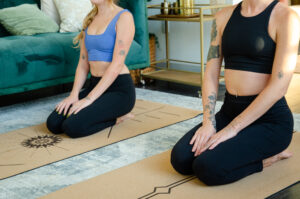
Breathing technique to improve your yoga practice
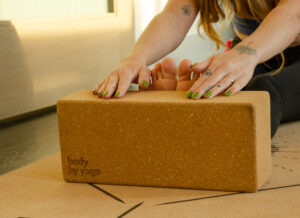
Benefits of yoga before bed
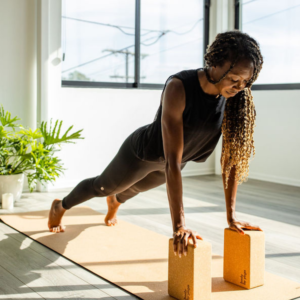
Taking the next step to more challenging yoga
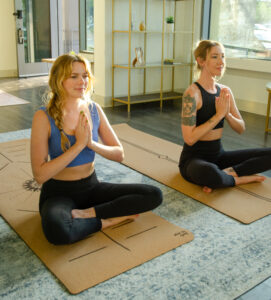
Hatha vs Power yoga
Related Articles
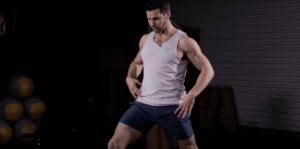
Yoga for Runners
How Yoga Can Help Runners Did you know that at least fifty to sixty-five percent of runners get injured each year? Whether these are small
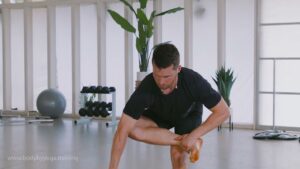
The one pose that can stretch your glutes, hamstrings, and back! (Great for athletes and runners!)
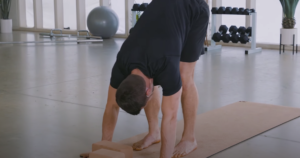
Pre-Workout Stretch | Amazing 2 Min Stretch To Do Before Your Run Or Leg Workout
In this video, I show you how to stretch before a run or leg workout. Try this amazing little 2 min stretch before your run
